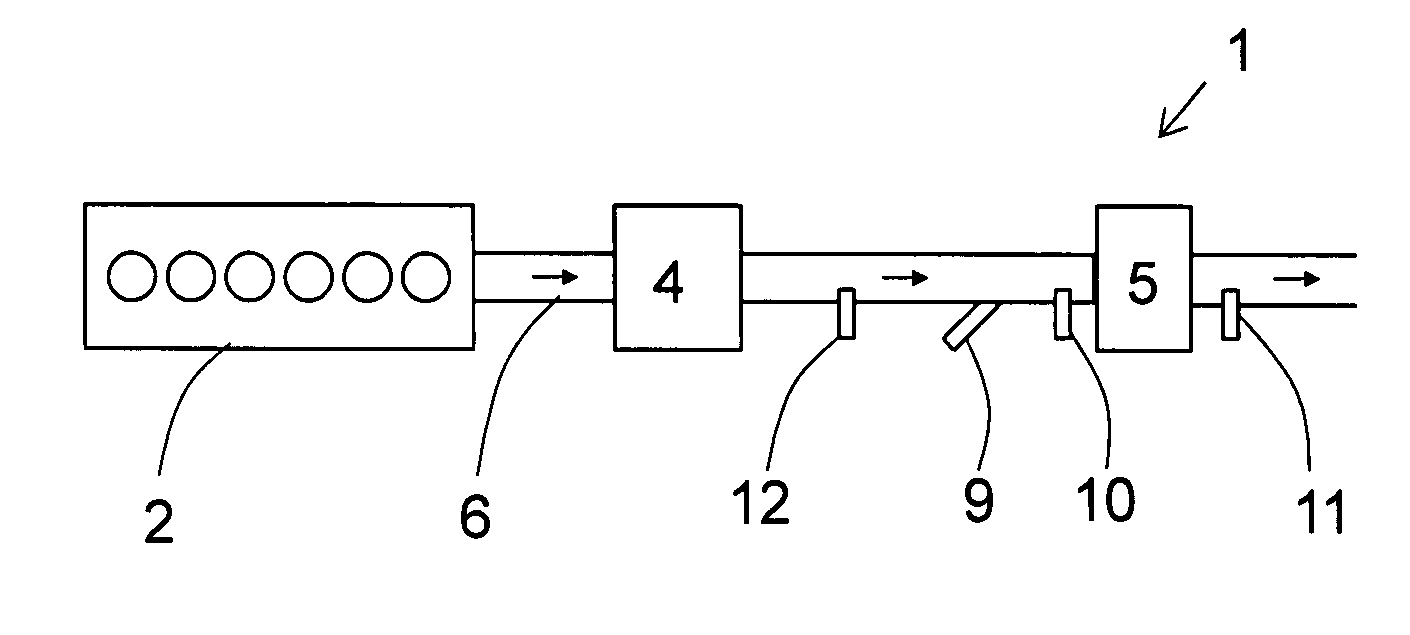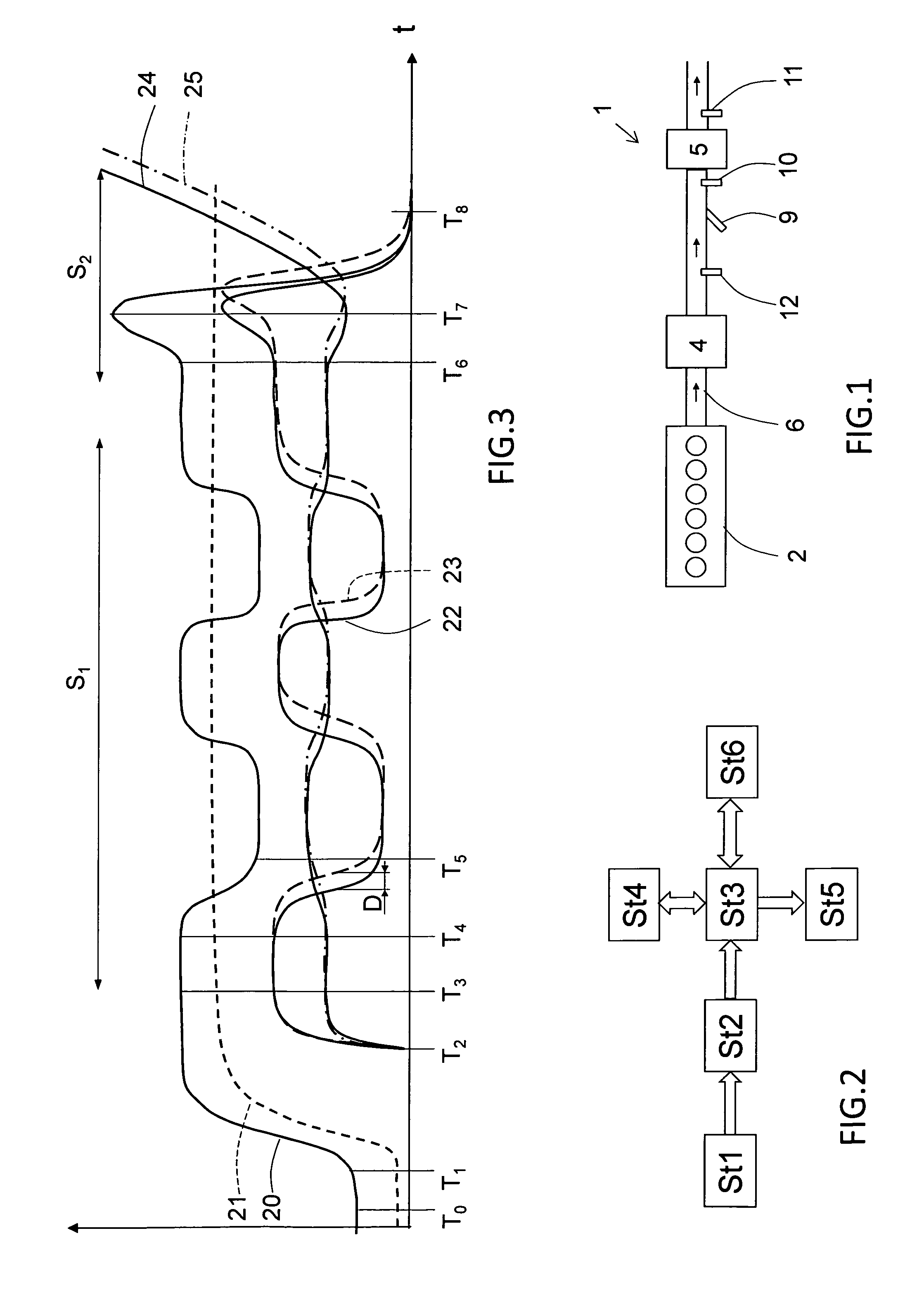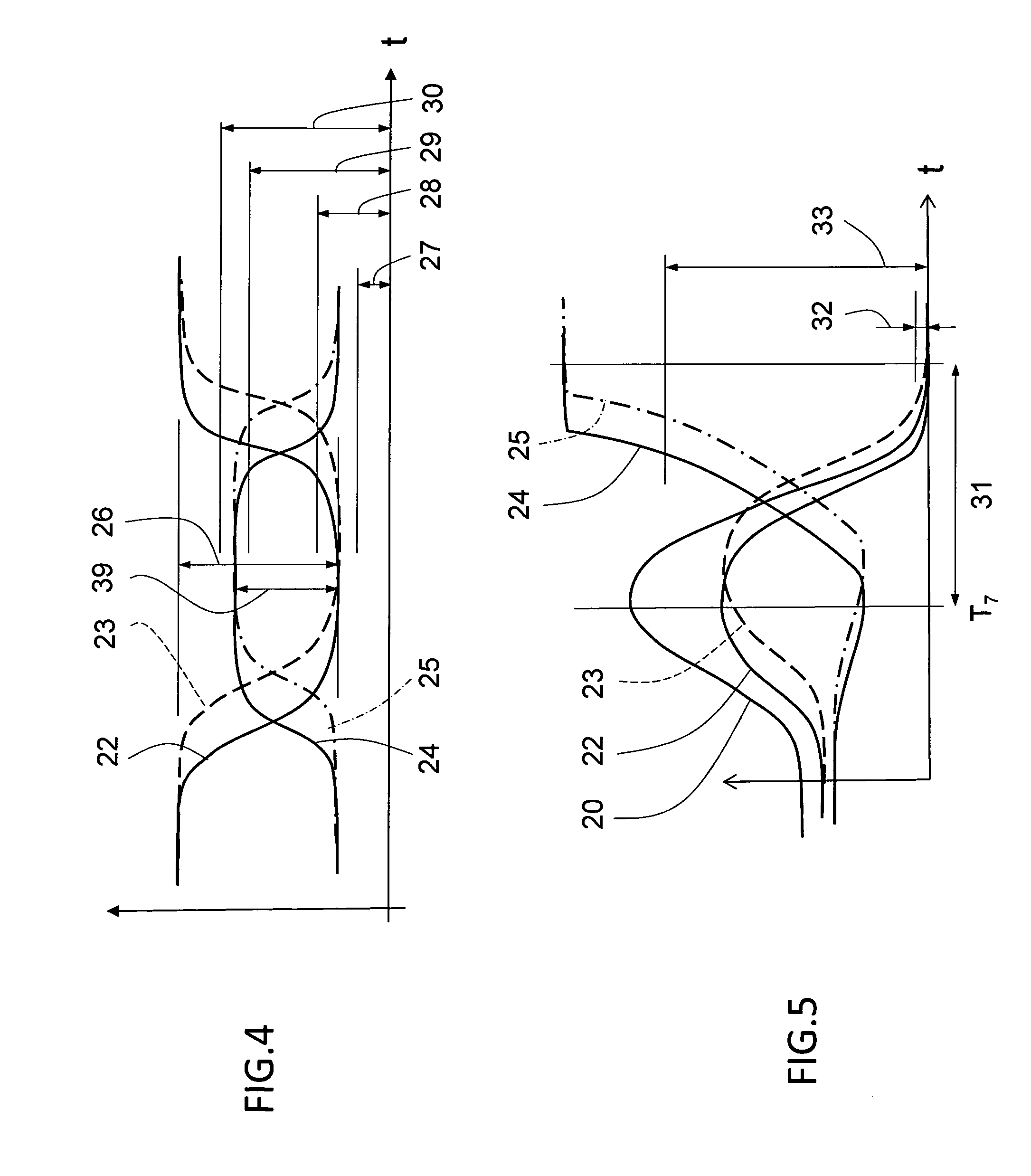Self-diagnosing method for diagnosing a scr system
a catalytic reduction and self-diagnosing technology, applied in the direction of machines/engines, electrical control, exhaust treatment electric control, etc., can solve the problems of high nox level, inability to achieve high efficiency, and increase in particulates, so as to reduce the reliability and accuracy of self-diagnosing method, accurate measurement of nox emission level entering and leaving, and accurate diagnosis of scr nox conversion efficiency
- Summary
- Abstract
- Description
- Claims
- Application Information
AI Technical Summary
Benefits of technology
Problems solved by technology
Method used
Image
Examples
Embodiment Construction
[0059]Various aspects of the invention will hereinafter be described in conjunction with the appended drawings to illustrate and not to limit the invention, wherein like designations denote like elements, and variations of the inventive aspects are not restricted to the specifically shown embodiments, but are applicable on other variations of the invention.
[0060]FIG. 1 shows schematically an exemplary layout of an exhaust aftertreatment system 1 of a diesel engine 2, in particular for a heavy truck or bus, or the like. The specific exhaust aftertreatment system 1 shown includes a particulate filter 4 to reduce the level of particulate matter. NOx emission from the engine 2 must also be reduced to comply with regulatory emission standards, and a SCR catalyst 5 is installed along the exhaust gas pipe 6 for this reason. Selective catalytic reduction is a means of converting NOx with the aid of a catalyst into nitrogen (N2) and water (H2O). A reductant, typically urea, is added to the e...
PUM
 Login to View More
Login to View More Abstract
Description
Claims
Application Information
 Login to View More
Login to View More - R&D
- Intellectual Property
- Life Sciences
- Materials
- Tech Scout
- Unparalleled Data Quality
- Higher Quality Content
- 60% Fewer Hallucinations
Browse by: Latest US Patents, China's latest patents, Technical Efficacy Thesaurus, Application Domain, Technology Topic, Popular Technical Reports.
© 2025 PatSnap. All rights reserved.Legal|Privacy policy|Modern Slavery Act Transparency Statement|Sitemap|About US| Contact US: help@patsnap.com



